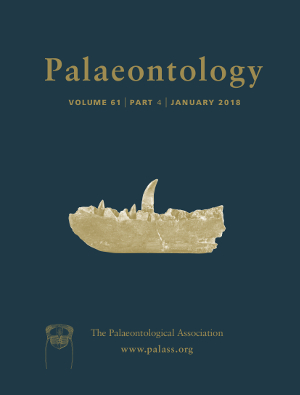Reg. Charity No. 1168330

Micro‐computed tomography (μCT) scanning now represents a standard tool for non‐destructive study of internal or concealed structure in fossils. Here we report on otoliths found in situ during routine μCT scanning of three‐dimensionally preserved skulls of Palaeogene and Cretaceous fishes. Comparisons are made with isolated otolith‐based taxa to attempt correlations between the body fossil and otolith fossil records. In situ otoliths previously extracted mechanically from specimens of Apogon macrolepis and Dentex laekeniensis match our μCT models. In some cases, we find a high degree of congruence between previously independent taxonomic placements for otolith and skeletal remains (Rhinocephalus, Osmeroides, Hoplopteryx). Unexpectedly, in situ otoliths of the aulopiform Apateodus match isolated otoliths of Late Cretaceous age previously interpreted as belonging to gempylids, a group of percomorph fishes that do not appear in the body fossil record until the Palaeogene. This striking example of convergence suggests constraints on otolith geometry in pelagic predators. The otoliths of Apateodus show a primitive geometry for aulopiforms and lack the derived features of Alepisauroidea, the lizardfish clade to which the genus is often attributed. In situ otoliths of Early Cretaceous fishes (Apsopelix and an unidentified taxon) are not well preserved, and we are unable to identify clear correlations with isolated otolith morphologies. We conclude that the preservation of otoliths suitable for μCT scanning appears to be intimately connected with the taphonomic history, lithological characteristics of surrounding matrix, and syn‐ and postdepositional diagenetic effects.